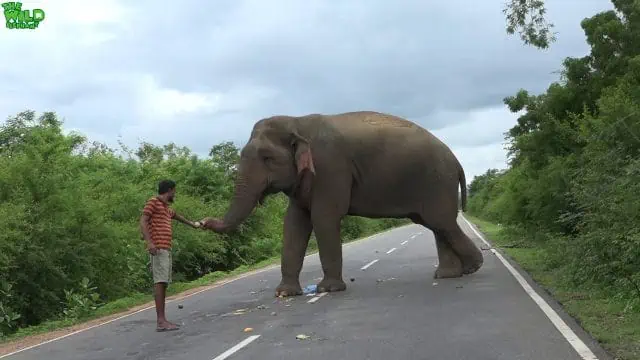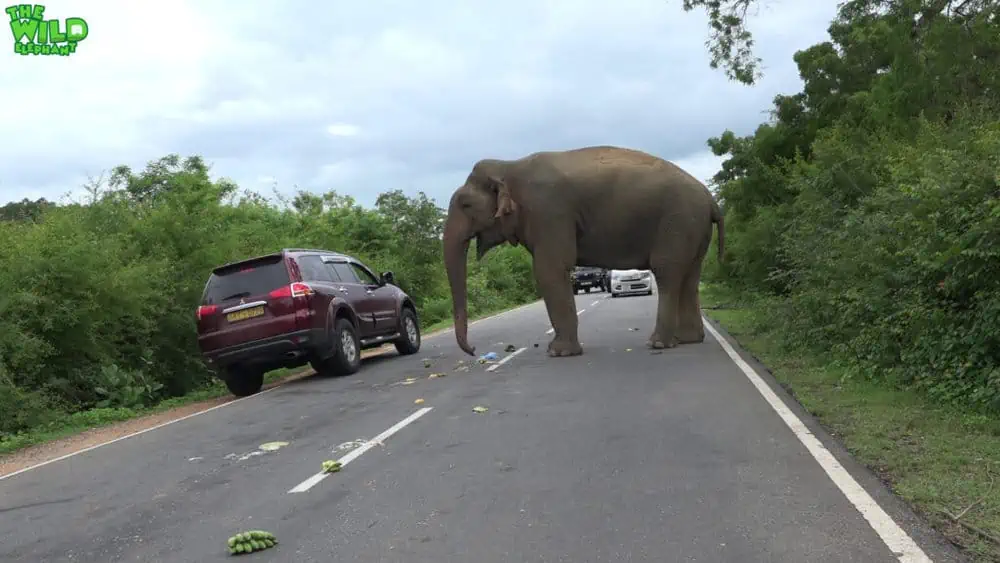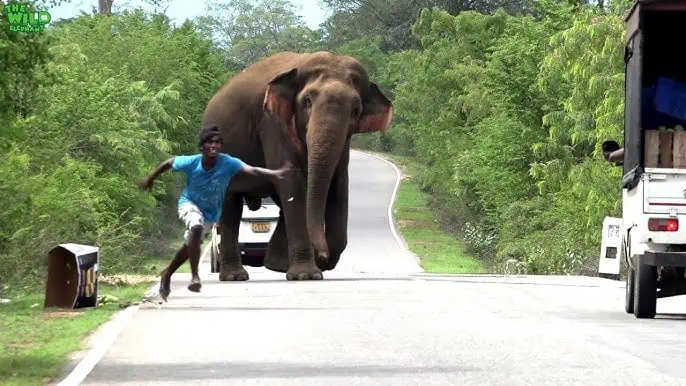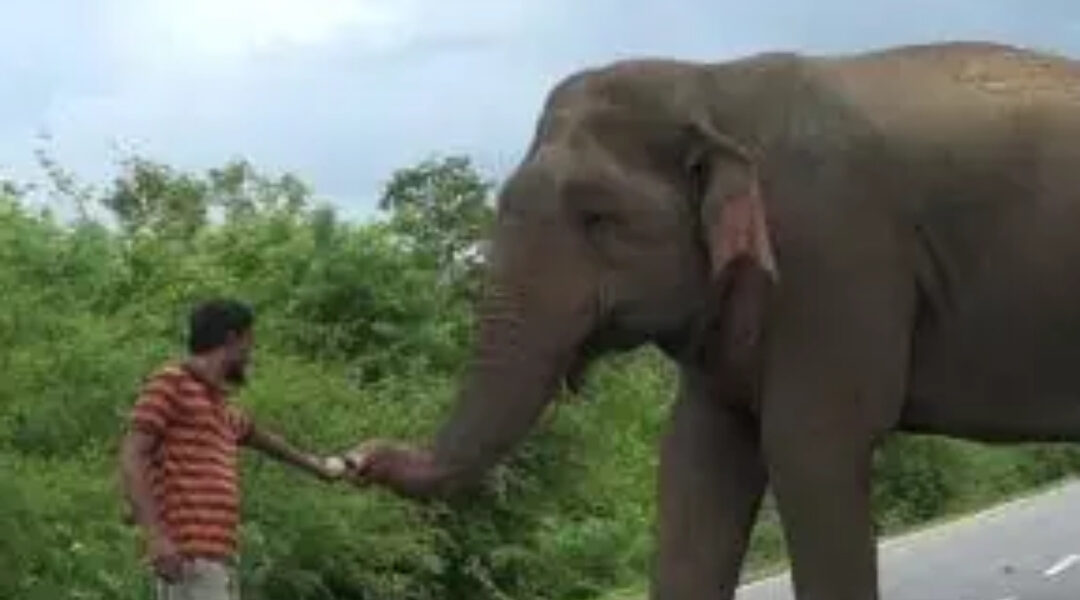Sri Lanka — an island where the air hums with prayers, temple bells, and the soft footsteps of giants. It’s a land where faith and nature live side by side, and sometimes, a journey to a sacred place becomes something far more magical than expected.

It happened on the road to the famed Kataragama Temple, a holy site where pilgrims travel to seek blessings from “Kataragama Deviyo,” the guardian deity of the region. The roads leading there are lined with fruit stalls, small shrines, and, quite often, elephants — those magnificent residents of the island who wander freely between forest and faith.
Among these gentle giants, one stands out. Locals call him The Fruit Booth Elephant.
He’s a legend on the road — massive, weathered, and wise, known for his peculiar habit of strolling up to roadside vendors and travelers, politely requesting a snack. Bananas, pineapples, mangoes — he isn’t picky, as long as it’s sweet. The air around Kataragama often smells of ripe fruit, and he knows that smell means kindness.
That day, we were driving toward the temple, camera ready, hearts already full from the lush scenery. We had heard of this elephant, but seeing him was something else entirely.

There he was — standing calmly by a cluster of fruit stalls, his trunk swaying gently in the warm breeze. His sheer size made him look like a mountain come alive, yet his eyes were soft, patient, curious.
Vendors called out, “Ah, the Fruit Booth Elephant is here again!” Some laughed, others hurried to hand him fruit before he decided to help himself. A man offered him a bunch of bananas; the elephant reached out delicately, plucking them one by one like a gentleman dining with care.
But not everyone understood his temperament.
A couple parked their car and stepped out, wanting to get closer, perhaps to feed him by hand or take a picture. Immediately, a vendor shouted, “Stay back! Get inside the car!”
His tone wasn’t angry — it was urgent.

You see, even gentle creatures have boundaries. And this elephant, while friendly, was known to become agitated if strangers approached too close. He had likely been startled or mistreated before, and now, caution was his language of survival.
The couple hesitated, torn between wonder and fear. Then the elephant gave a low rumble — not aggressive, but deep enough to remind everyone who truly ruled the road. They quickly returned to their car, and the onlookers sighed with relief.
Moments later, the great elephant turned back toward the fruit stall, finishing his snack before slowly retreating into the trees, his enormous frame fading into the misty horizon like a moving memory.
Silence lingered after his departure — the kind of silence that follows awe.

There was something profoundly humbling about it — this reminder that even in a land filled with temples and prayers, divinity could appear in unexpected forms: in the calm eyes of an elephant, in the kindness of villagers who fed him, in the balance between respect and love that bound them all.
As the car rolled onward, I looked out the window at the trees closing around the road and thought about how easily we forget that the earth belongs to them as much as to us.
The Fruit Booth Elephant isn’t just a local curiosity. He’s a symbol — of coexistence, of patience, of how generosity can flow both ways between humans and the wild.
At the Kataragama Temple, people bow their heads to gods unseen. But outside, on the road lined with fruit and dust, another kind of reverence takes place — one where people feed the giants who walk among them, not out of fear, but out of gratitude.
In a world that often feels divided, this small, sacred exchange between man and nature is a quiet miracle — a moment that says: we can still live together, if only we remember to be kind.
📌 Because sometimes, faith doesn’t live inside temples — it walks beside you, with tusks, a trunk, and a gentle heart.




